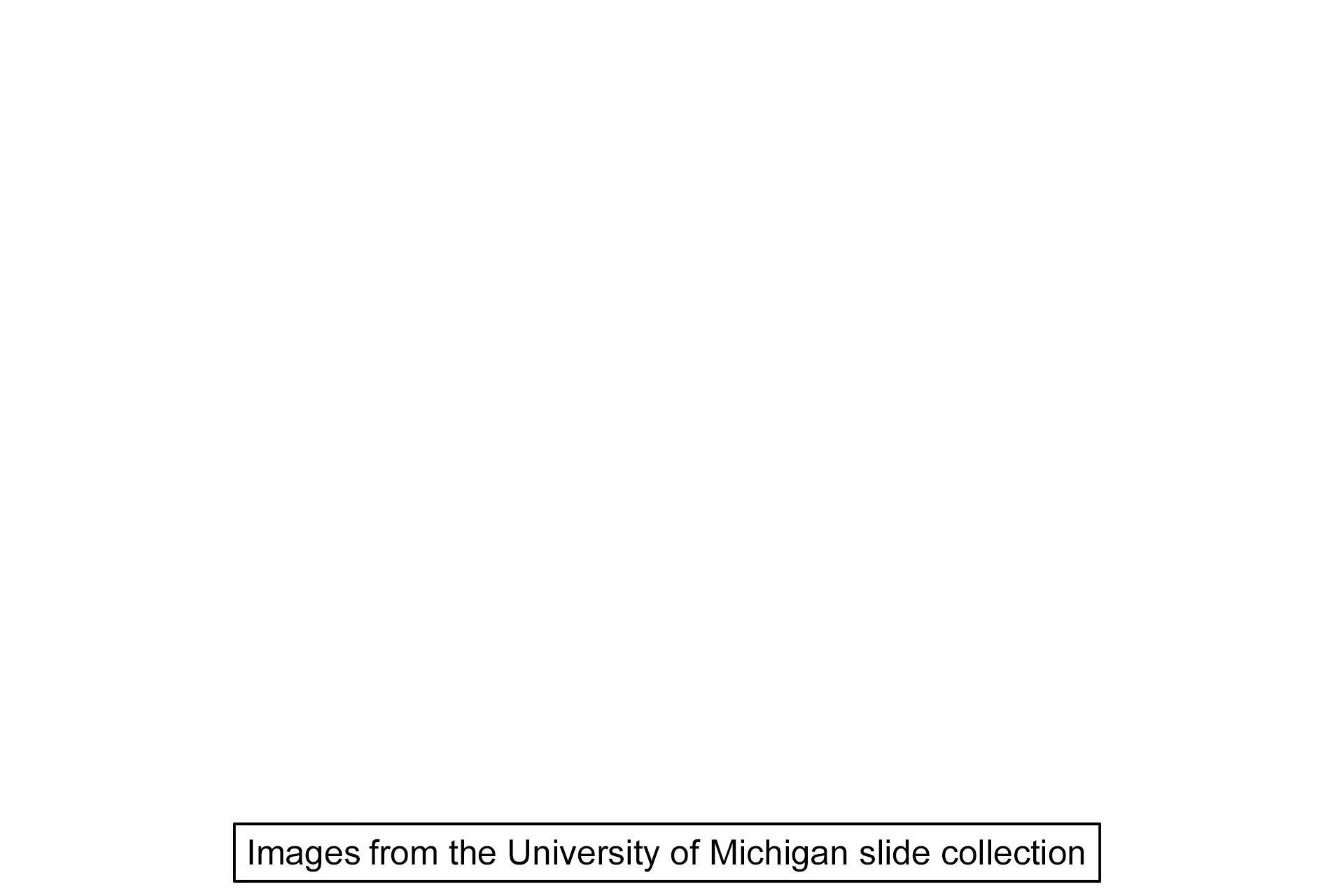
Root stage of tooth development - Apex
This image shows the apex of the tooth where blood vessels and nerves enter through the apical foramen and where the dental pulp tissue becomes continuous with the surrounding connective tissue. During this stage, the cervical loop elongates into the Hertwig’s epithelial root sheath, a two-cell layered diaphragm that determines the shape of the tooth root. 10x (l), 300x (r)

Dental pulp
This image shows the apex of the tooth where blood vessels and nerves enter through the apical foramen and where the dental pulp tissue becomes continuous with the surrounding connective tissue. During this stage, the cervical loop elongates into the Hertwig’s epithelial root sheath, a two-cell layered diaphragm that determines the shape of the tooth root. 10x (l), 300x (r)

Odontoblasts >
Odontoblasts deposit the organic matrix of dentin (predentin) which rapidly becomes mineralized by hydroxyapatite, forming dentin.

- Predentin
Odontoblasts deposit the organic matrix of dentin (predentin) which rapidly becomes mineralized by hydroxyapatite, thereby forming dentin.

- Dentin
Odontoblasts deposit the organic matrix of dentin (predentin) which rapidly becomes mineralized by hydroxyapatite, thereby forming dentin.

Cementum >
Cementum is produced by cementoblasts and forms a thin layer of bone-like tissue extending from the cemento-enamel junction to cover the root of the tooth. Anchoring collagen fibers of the periodontal ligament, extend from the cementum to the alveolar bone to stabilized the tooth in its socket. Cementocytes, which maintain the cementum, are visible in this layer.

- Cementoblasts
Cementum is produced by cementoblasts and forms a thin layer of bone-like tissue extending from the cemento-enamel junction to cover the root of the tooth. Anchoring collagen fibers of the periodontal ligament, extend from the cementum to the alveolar bone to stabilized the tooth in its socket. Cementocytes, which maintain the cementum, are visible in this layer.

Hertwig’s epithelial root sheath >
During the root stage, the cervical loop elongates into a two-cell layered Hertwig’s epithelial root sheath that determines the shape of the tooth root. The sheath develops from the inner and outer enamel epithelia but does not include the stratum intermedium. The absence of the stratum intermedium prevents the differentiation of the inner epithelium into ameloblasts, and thus they disintegrate. In this micrograph, the sheath has invaginated at the apex of the tooth root forming the epithelium diaphragm.

Apical foramen >
The apical foramen is the opening at the apex of the tooth root where the connective tissue of the pulp communicates with the connective tissue of the periodontal ligament.

Image source >
These images were taken of a slide in the University of Michigan slide collection